Hens: A Wonderful Barnyard Puzzle of Egg-cellent Quality

Create a barnyard filled with colorful chickens of various breeds to collect plenty of eggs and awards with Hens.
It’s nice to be able to play a lot of new arrivals, rather than letting them sit around. Hens arrived the other day, which was an exciting delivery! This looked like a fairly light sort of puzzle, although chickens don’t appear in a lot of my board games. I loved checking out the artwork and couldn’t wait to get started on my very own tabletop barnyard!
Game Overview
Game Name: Hens
Publication Year: 2023
Designer: Giampaolo Razzino
Artist: Marco Salogni
Publisher: Little Rocket Games
Solo Mode: Included in the Base Game
The goal is to complete a 3×4 or 4×3 collection of hens, based on placement rules across different breeds. Choices are quick and important, while the rooster comes out halfway through to mark a prediction about the second largest group. It’s a time to cluck, cluck, cluck to victory!
First Play
March 23, 2023
Complexity
2
Latest Play
February 4, 2024
Expansions
1
Setup Time
Almost None
Lifetime Plays
16
Play Time
5 Minutes
High Score
40
Game Area
18" x 14"
Low Score
9
Quack or Cluck?
I immediately had some interest from my Calico Critters, although birds seem to be quite rare to come across.
There were some vague hen-like noises, but these tiny ducks weren’t fooling anyone! Even their offering of all the eggs they could find wasn’t enough. Ha ha!
I’m convinced the box artwork in the background features some affronted hens with very upset looks!
But, in a way, this was similar to gameplay in carefully arranging hens of different breeds and working to collect lots of eggs, or victory points. See you later, ducks!
A Tiny Barnyard
It took me a few minutes to get through the rules, and before I knew it, my first play was over! This is a quick solo game all about taking chances and making choices.
Hens of the same breed can always be next to each other. But for different breeds, the card values must be in sequential order. Not too difficult to see, though.
For impossible placements, I added a chicken coop that was worth negative victory points in the end.
The rooster was interesting, coming out halfway through to be placed on the predicted second largest group.
Slight Solo Issue
It was simple to understand the solo rules, which mainly involved drawing 2 cards per round and deciding how to use each one in order. A little bit of luck, too!
The only known problem is with a single goal card, which awards victory points for having 5 different breed.
However, solo will only ever involve 4 different breeds, unless the promo chicken is used. That’s the Savage Predator from above that I conveniently left out. Yikes!
All of the other components worked for solo, though, and it was nice to choose different breeds between plays.
Barnyard Antics
I enjoyed the simple decisions, especially since I could only see a single card at a time. My hand always had 5 cards to choose from, though, so decisions weren’t forced.
With such a quick play time, the chickens just kept lining up! The final grid will always be 3×4 or 4×3, but I enjoyed the choices involved with building it from a single card.
This play almost resulted in no coops, as I actually had the surrounding hens partially in order. Not my day, though!
As to the card variety, I could have swapped out these breeds for the others to enjoy new artwork.
Recognizing Different Game Mechanics
With so many solo games in my collection, I can often find some similarities within new games. That’s not a bad thing, though: Understanding game mechanics and the general ideas help make new games easier to approach. As I read through the rules and started to play, I noticed a little bit of various games coming through:
- Arboretum: The limited number of breeds to use is like the split deck, and the numbered cards play a major role.
- Herbaceous: Drawing a single card, deciding what to do with it, and then drawing another is a familiar aspect.
- Piepmatz: Variable eggs feature similar artwork, and the focus on group size and card values are paramount.
- Village Green: Placement restrictions and the general grid feel rather similar, as does the idea of a goal card.
Very fun! The theme gave it a unique flair, too. This recognition probably made the rules even easier to understand for me. That’s always the benefit of being familiar with a lot of games: New ones can be much easier to learn!
Duck, Duck, Hen?
I had some trouble convincing my duck visitors to clear the barnyard for the hens. So, they made a case about how they were clearly disguised as specific breeds. Ha ha!
There might have been a legitimate case had I not been so interested in hitting the highest scoring tier!
Gameplay relied a lot on the luck of the draw, although not entirely. And with just a quick card shuffle needed to start over, I wanted to keep playing again and again.
My collection has a lot of these quick sorts of puzzle games, but just like eggs, I can never get enough!
The Best Barnyard
Over and over, I tried to get this barnyard into proper shape. Coops showed up as I didn’t quite get lucky enough to make it all work. Until… It all came together!
Granted, there was a turn when I needed the perfect hen card to come out and it did. I scored for my largest group plus the rooster’s group, which was a lot!
The solo goal card helped me out a little more, too, as did all of those ribbons. Quite a lovely groups of hens.
As a beat-your-own-score model, I didn’t feel the need to continue, although I can see a return to the barnyard!
Session Overview
Play Number: 1-6
Solo Mode: Included in the Base Game
Outcome: 9, 15, 10, 14, 17, 32 (1 Win and 5 Losses)
This was a fun solo game! I enjoyed the simple rules that still made me think about how to place every hen card. There are other breeds to add some visual variety, and with such a short play time, this is easy to bring to the table every now and then. It mixes together some fun mechanics in a way that doesn’t over-complicate gameplay. Plus, look at those happy chickens! I’m glad I picked this one up and now have a hen-themed game!
%
10 Plays
Affordability
Price & Value
9
Functionality
Challenges & Mechanics
10
Originality
Design & Theme
5
Quality
Components & Rules
10
Reusability
Achievement & Enjoyment
9
Variability
Distinctness & Randomness
2
+ Pros (Positives)
- The rules are very easy to understand, and only the goal cards might need to be referenced in the appendix.
- Gameplay is simple, straightforward, and quick with enough interesting decisions to make the time spent fun.
- Different breeds can be swapped to add some visual variety in between plays, although the values are identical.
- Deciding what to do with a drawn hen card isn’t always easy and a little bit of push-your-luck can be present.
- Since the rooster only scores for the second largest group, that prediction can change later game decisions.
- Familiar mechanics make the learning process quick, yet this doesn’t feel like a copy of any other solo game.
– Cons (Negatives)
- Luck plays a major role in the order of the cards, so there isn’t any way to mitigate cards that can’t be placed.
- The grid of cards can expand in any way, yet there are usually obvious decisions about how to maximize cards.
- High scores happen from some good choices and mostly luck, so this might not be a long-term favorite.
- Since gameplay moves so quickly, it can be very easy to forget to place the rooster at the halfway point.
Victory Conditions
Score 25+ Points
- Overall Goal Progress 100%
Goals and Milestones
Score at least 25 points.
Score at least 35 points.
Score at least 40 points.
Continue the Conversation
What do you think of Hens? I expected it to be an easy sort of puzzle, but it works very nicely! Are there any other solo games that have surprised you lately? My list of unplayed games is slightly going down, but it’s nice to take things slowly. I enjoyed arranging these hens a lot and solving the quick placement puzzles. Definitely an egg-cellent game!
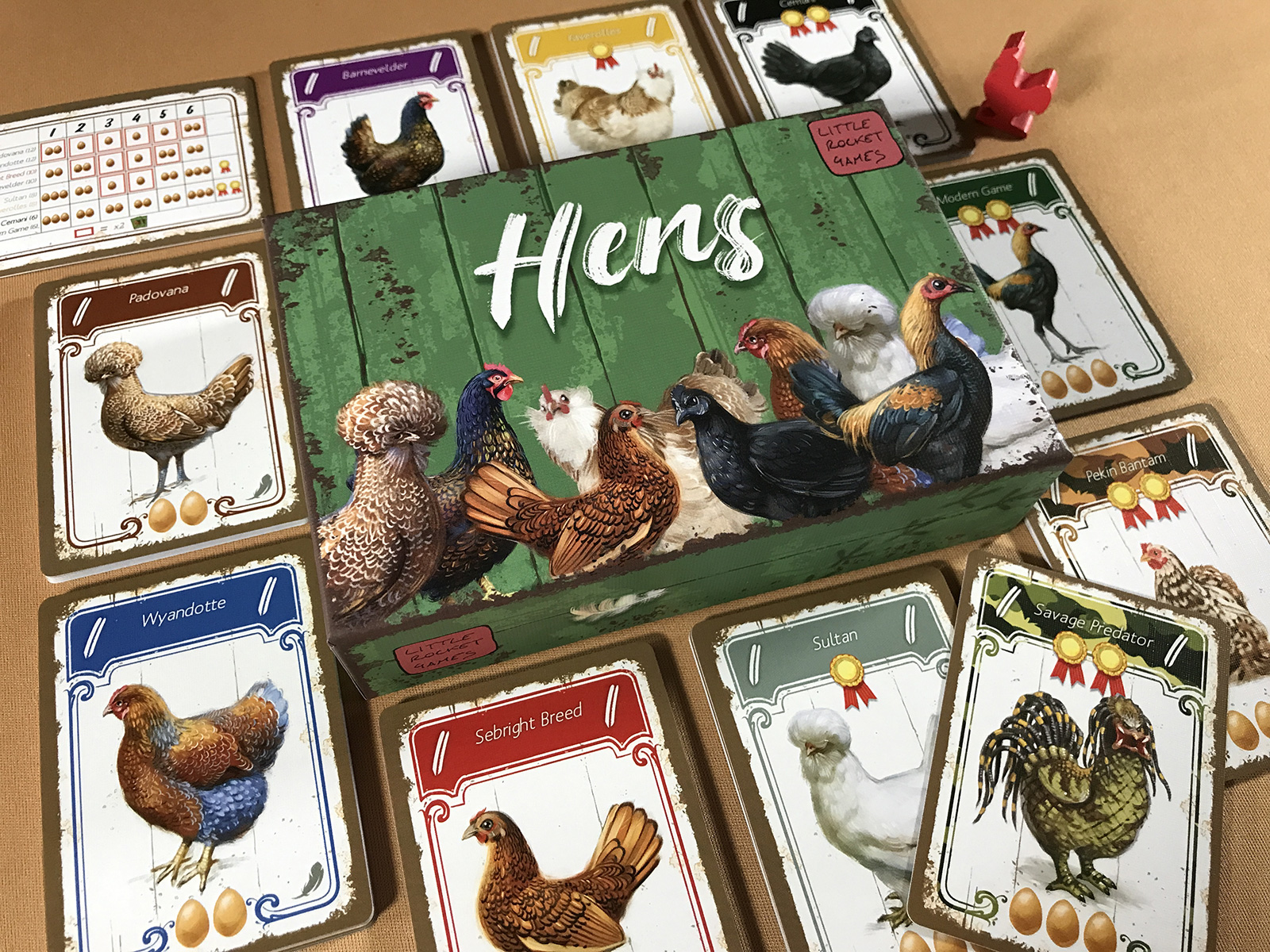
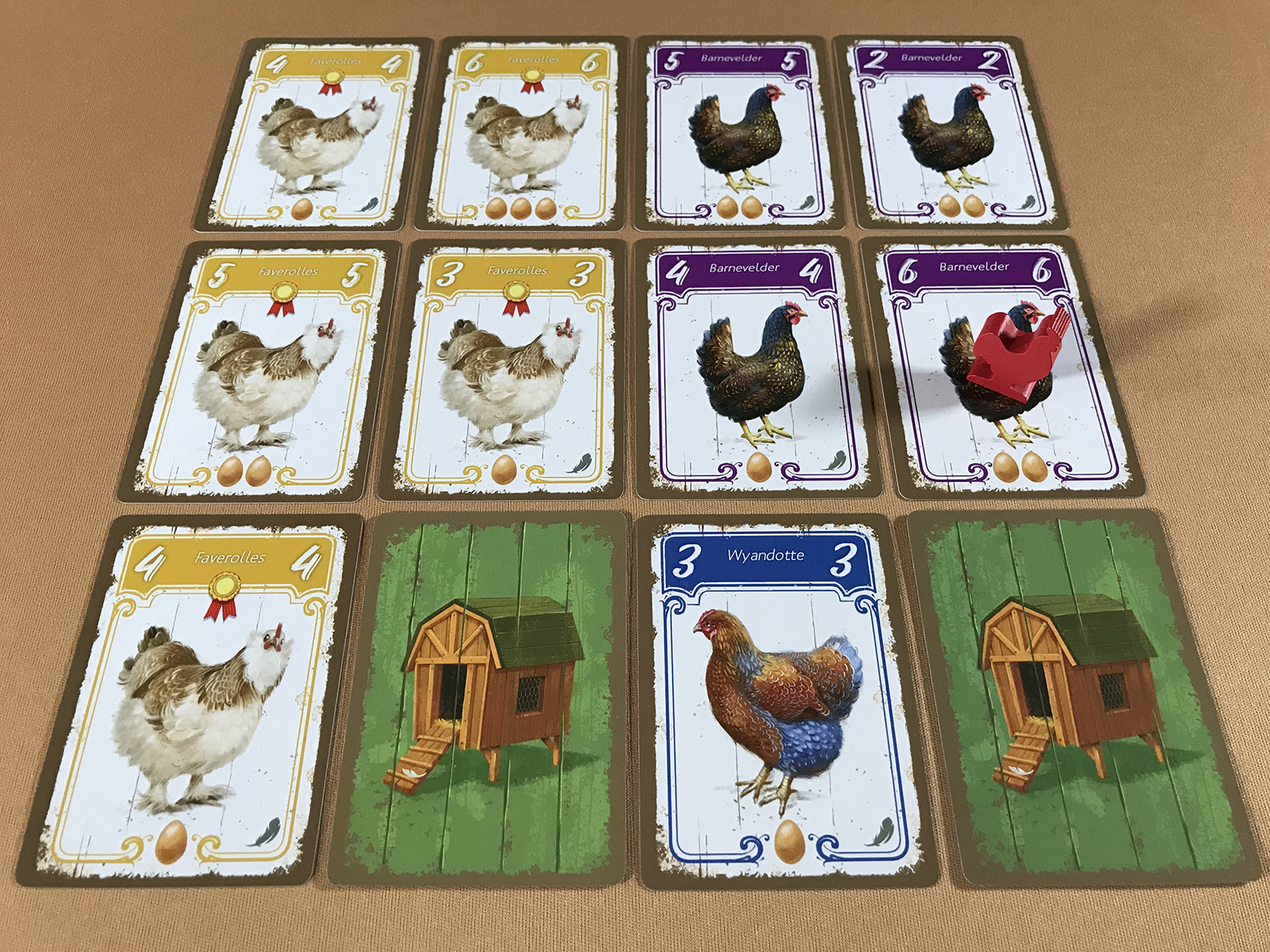
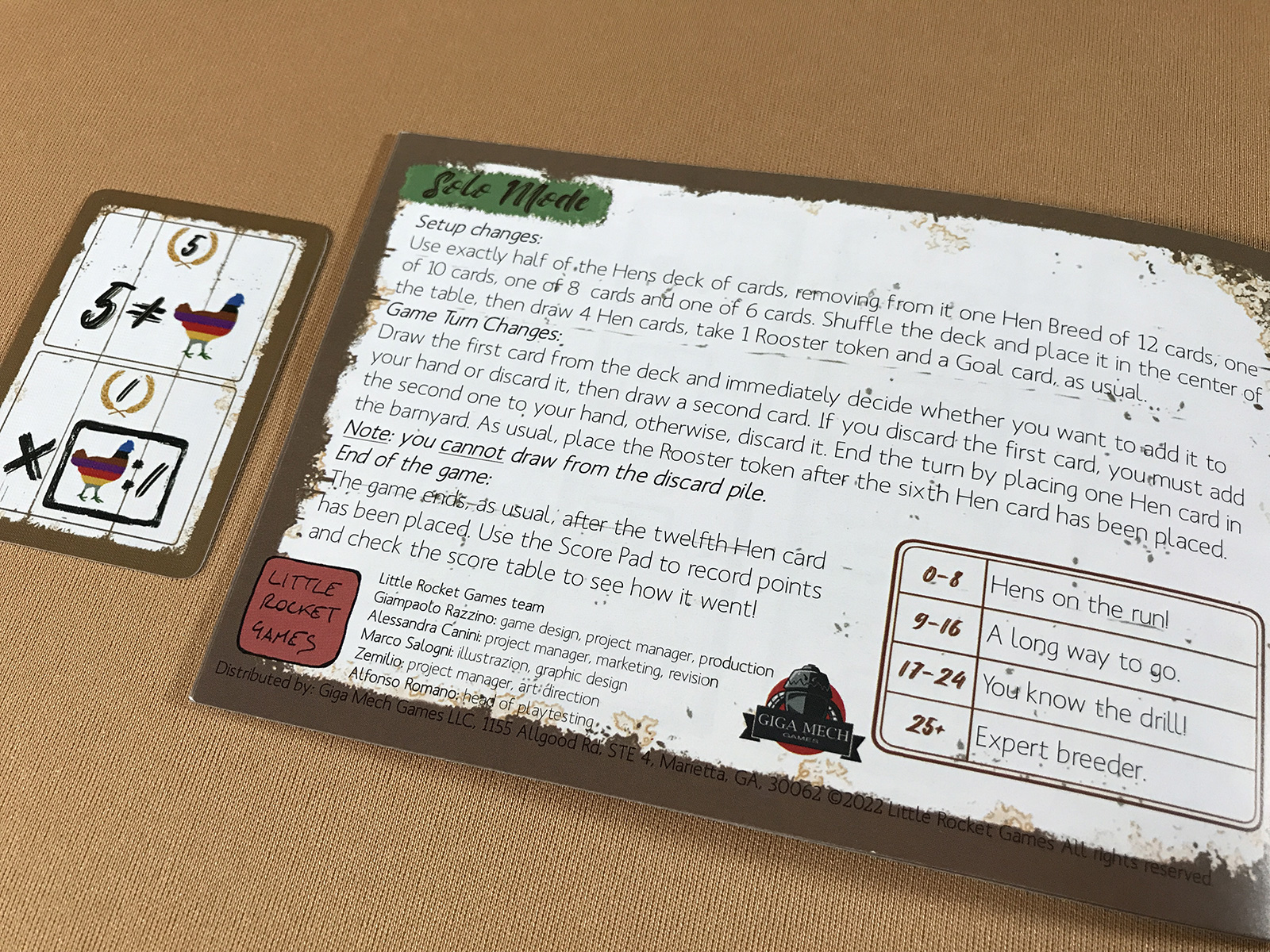
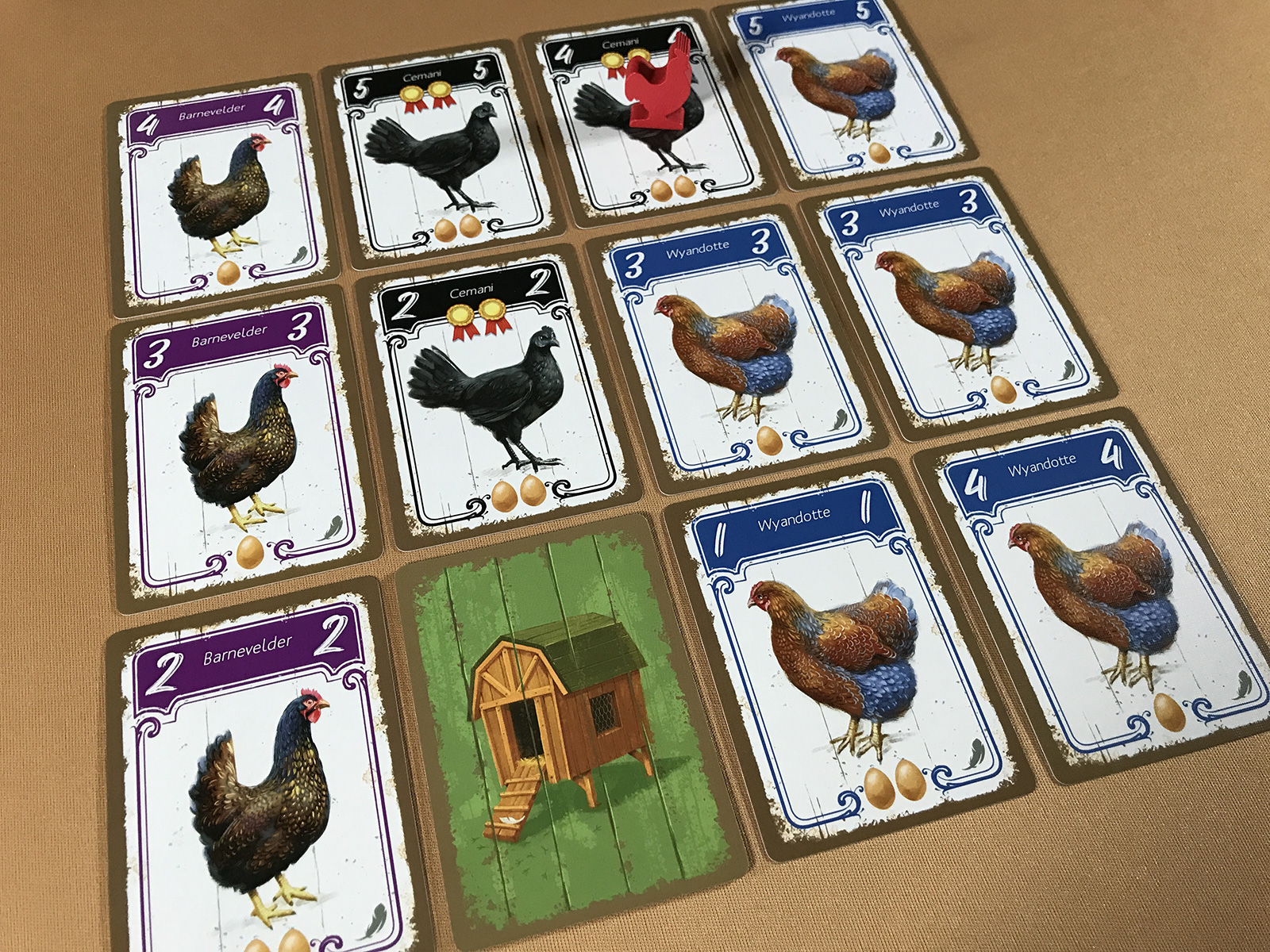
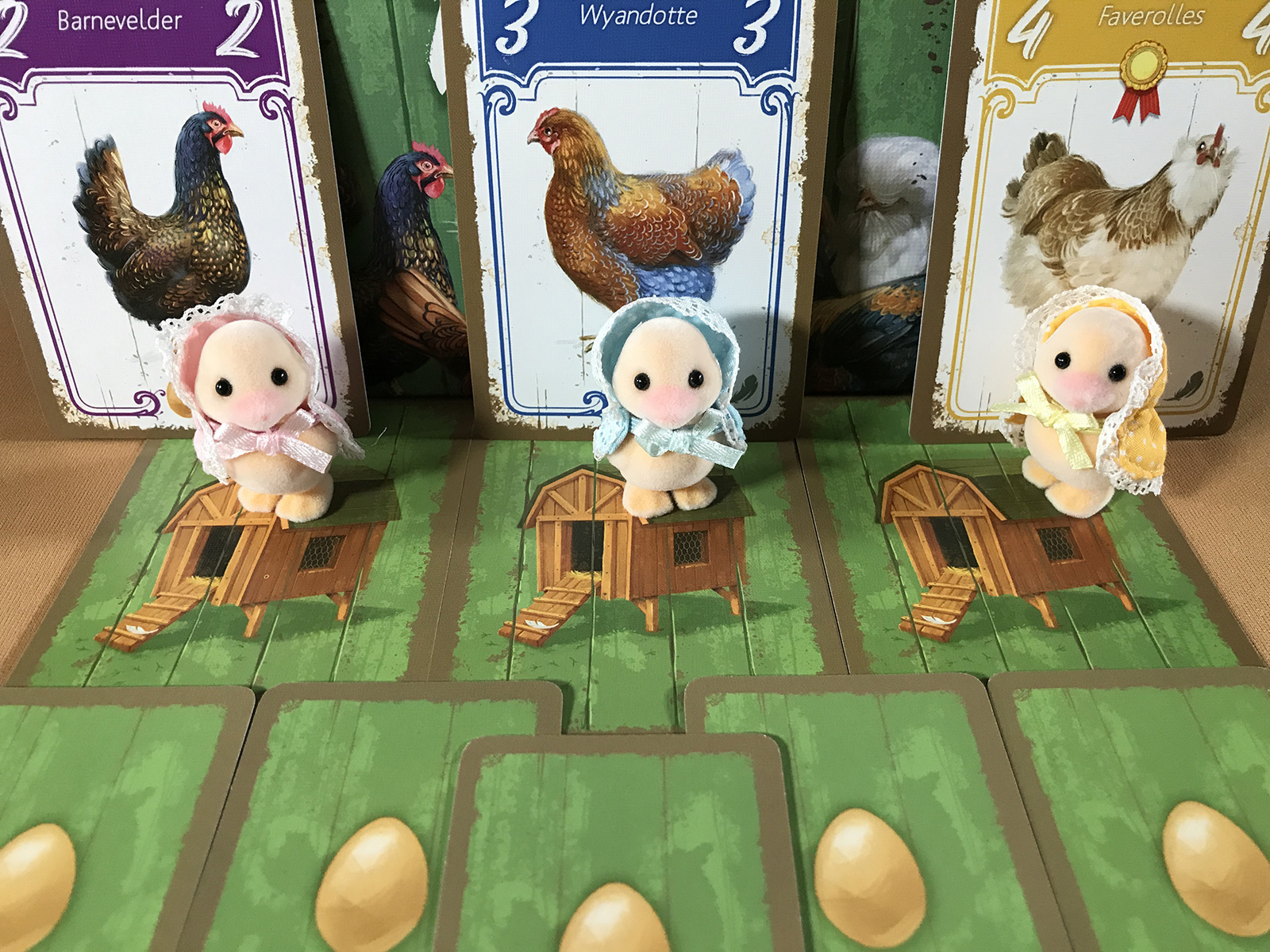
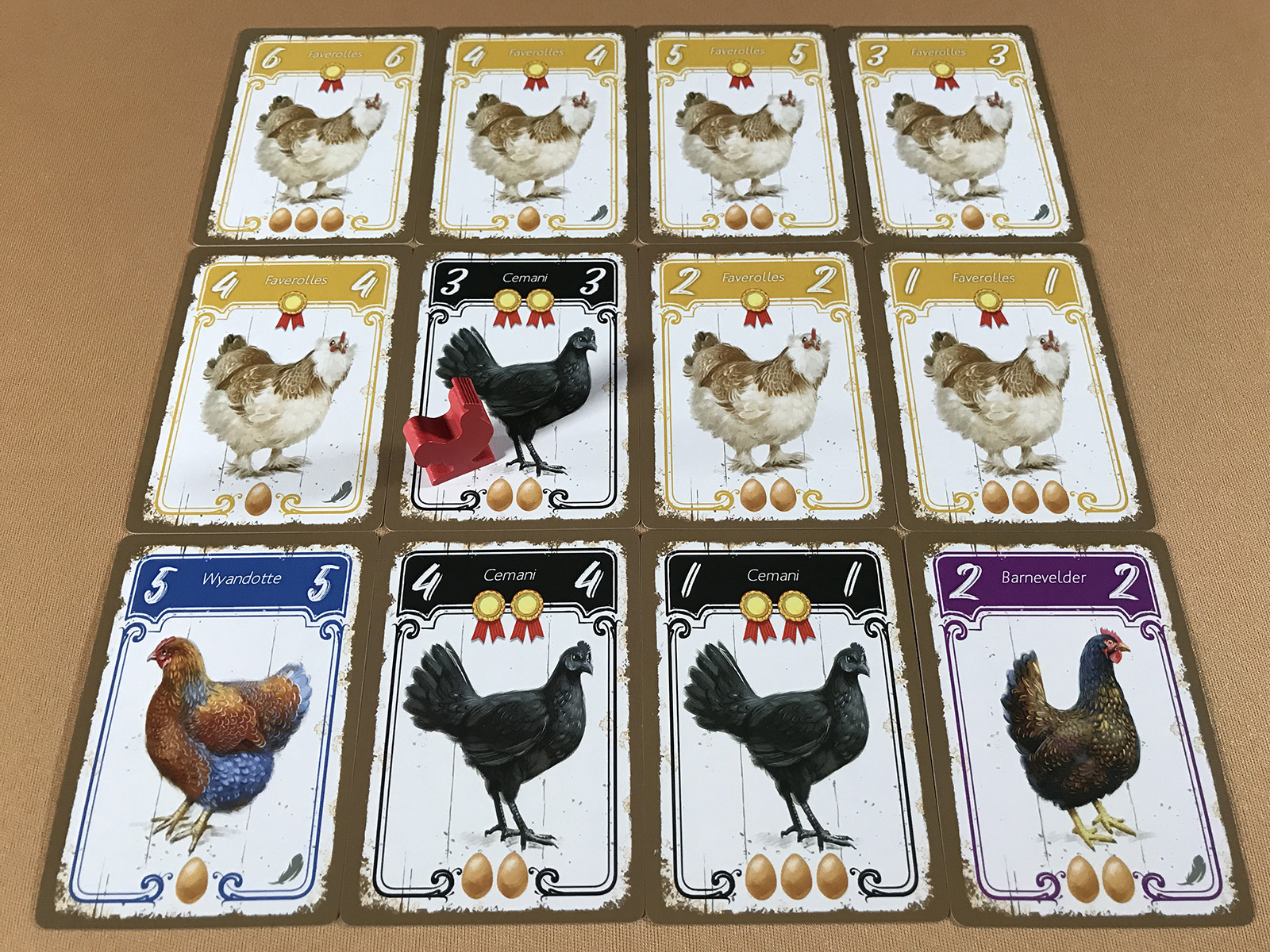
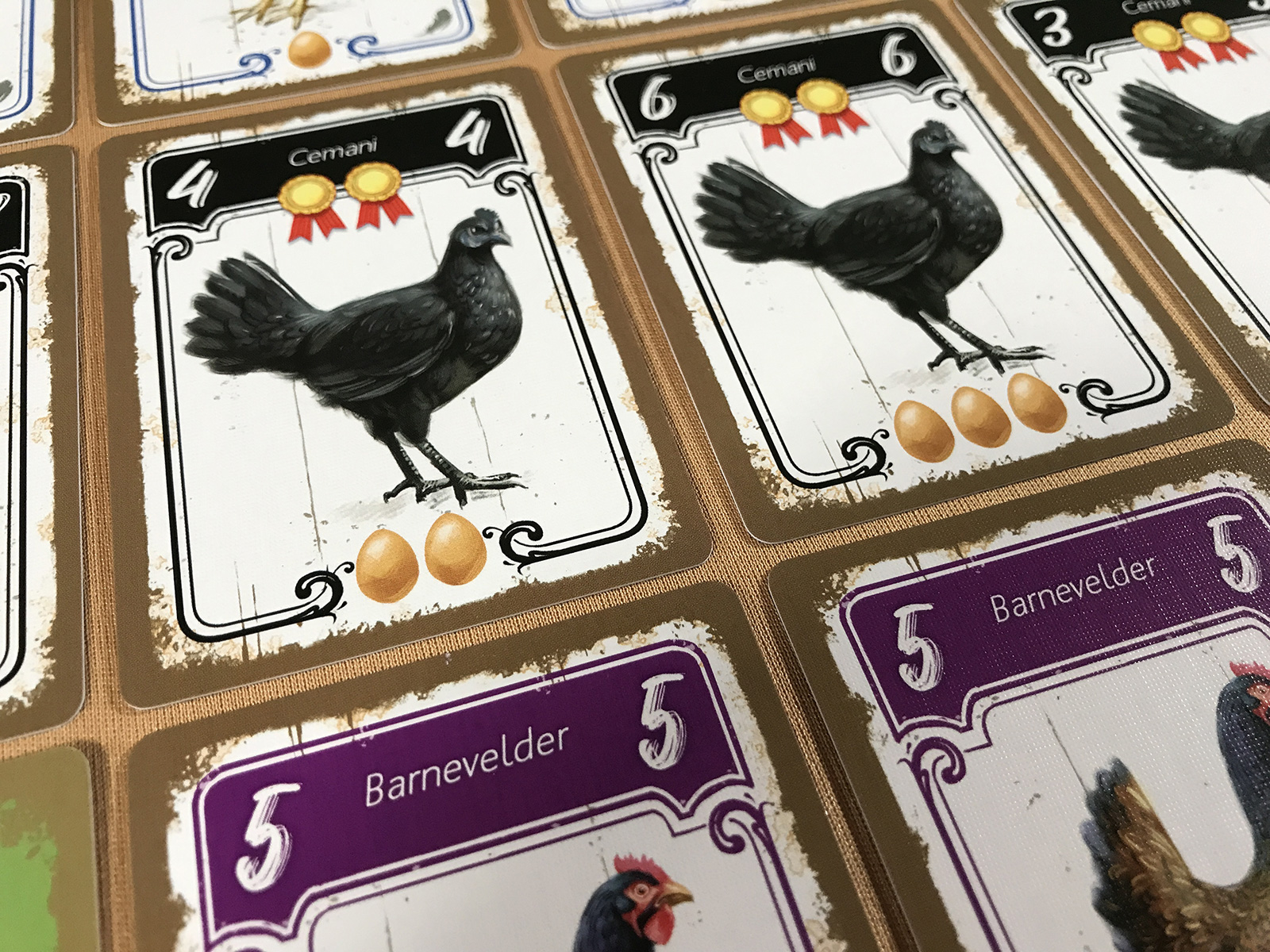
0 Comments